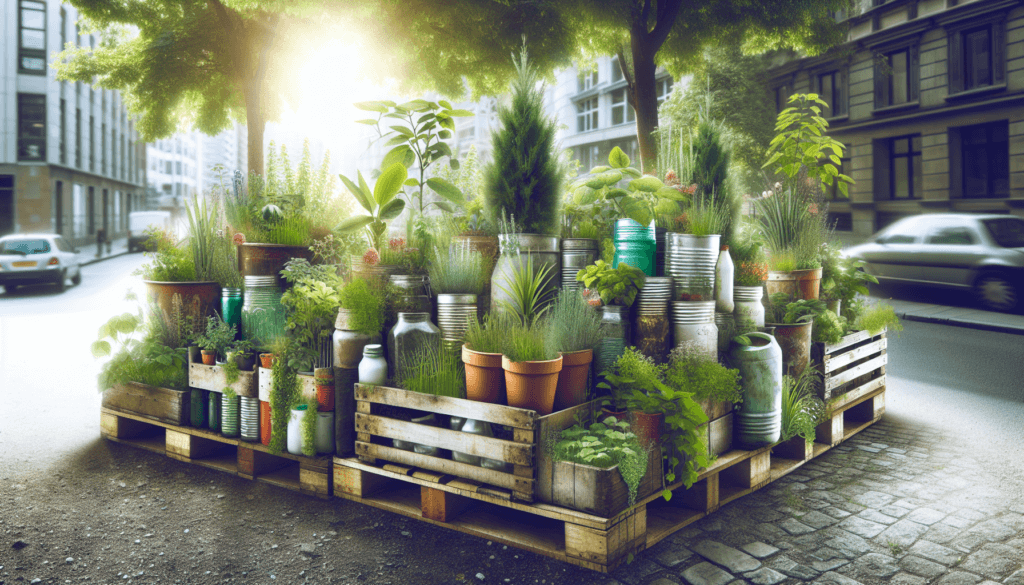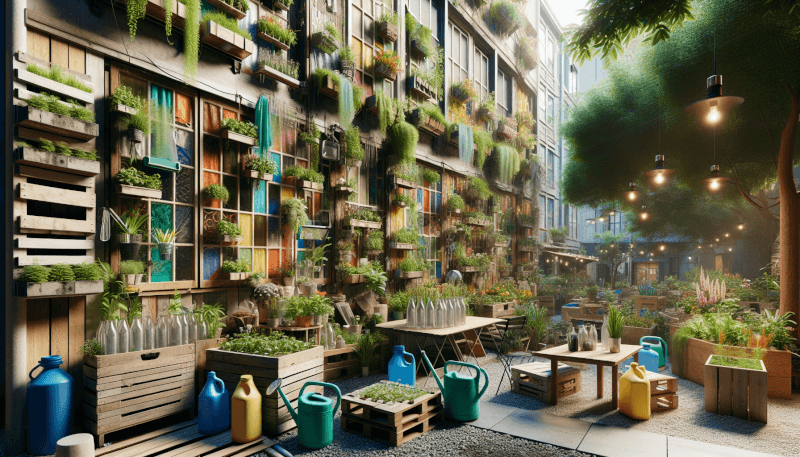In today’s world, where sustainability and green living are gaining more importance, urban gardening has become a popular way for city dwellers to reconnect with nature. However, with limited space and resources, finding innovative ways to create a thriving garden can be a challenge. That’s where recycled materials come in. By repurposing everyday items such as old tires, plastic bottles, and pallets, you can transform them into unique and functional additions for your urban garden. From vertical planters to raised beds, these top ways to use recycled materials will not only enhance your garden but also contribute to a more environmentally friendly lifestyle.
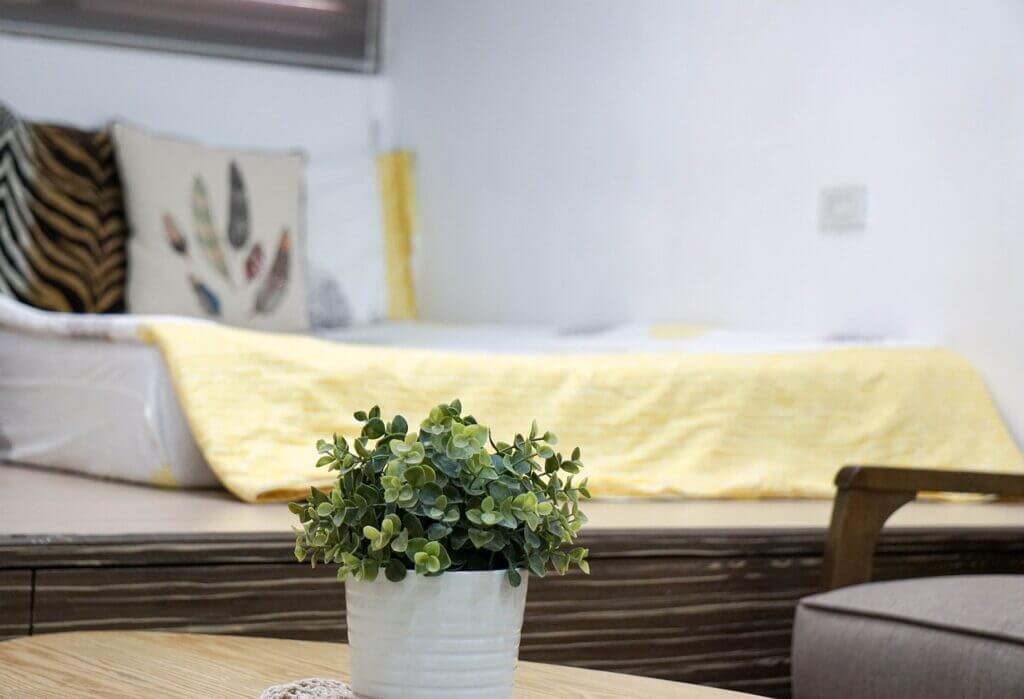
1. Vertical Gardening
Vertical gardening is a great way to maximize space in urban areas where land is scarce. Not only does it make use of vertical surfaces, but it also adds a touch of greenery to your surroundings. There are several creative ways to implement vertical gardening using recycled materials.
1.1 Using Recycled Pallets
One of the most popular and cost-effective methods of vertical gardening is using recycled pallets. These wooden structures can be easily transformed into vertical planters by attaching pots or containers to the pallet’s openings. By painting the pallets in vibrant colors, you can add a unique touch to your garden while reusing materials that might have otherwise ended up in a landfill.
1.2 Creating a Living Wall
A living wall is an innovative way to incorporate vertical gardening into your urban space. By utilizing recycled materials such as old wooden frames or metal grids, you can create a framework for plants to grow vertically. Fill the frame with soil and choose plants that thrive in this type of environment, such as succulents or trailing vines. The result is a beautiful, living tapestry of plants that not only adds visual appeal but also improves air quality.
1.3 Utilizing Old Ladders as Plant Stands
Don’t let old ladders go to waste! Repurpose them into vertical plant stands to create a unique garden display. Simply place potted plants on each step of the ladder, ensuring they receive adequate sunlight and water. You can even hang small planters from the ladder’s rungs for added greenery. This creative solution not only adds a rustic charm to your garden but also helps declutter your space by utilizing old items in a new and functional way.
2. Container Gardening
Container gardening is an excellent option for urban dwellers with limited outdoor space. By repurposing various types of containers, you can create a colorful garden oasis right on your balcony or patio.
2.1 Repurposing Plastic Bottles
Plastic bottles are versatile and can be transformed into unique planters for smaller plants or herbs. Cut off the top portion of the bottle, leaving the bottom intact as a reservoir for water. Add soil and your chosen plants, and voila! You have an upcycled planter that is both functional and visually appealing.
2.2 Transforming Old Tires into Planters
Instead of throwing away old tires, consider turning them into planters. Clean the tires thoroughly and paint them with vibrant colors to add a pop of personality to your garden. Fill each tire with soil and plant flowers, vegetables, or even small shrubs. Stack the tires on top of each other to create a visually interesting arrangement while utilizing the vertical space.
2.3 Using Recycled Metal Barrels
Transforming recycled metal barrels into planters is another great way to repurpose materials for container gardening. These sturdy containers are ideal for growing larger plants or even creating a small vegetable garden. Cut the top portion of the barrel off, leaving a deep container for soil. Ensure proper drainage by drilling holes in the bottom, and then fill with nutrient-rich soil. Plant your desired vegetables or flowers, and watch your garden flourish.
3. Raised Bed Gardening
Raised bed gardening is an excellent option for urban gardens with limited space or poor soil quality. By building raised beds from recycled materials, you can improve drainage, control soil conditions, and grow a variety of plants more efficiently.
3.1 Building Raised Beds from Reclaimed Wood
Using reclaimed wood to construct raised beds not only helps reduce waste but also adds a rustic charm to your garden. Look for old pallets, discarded wooden boards, or even old furniture that can be repurposed into raised bed frames. These can be easily assembled and filled with high-quality soil, providing your plants with a nutrient-rich environment to thrive.
3.2 Using Discarded Bricks as Edging
If you happen to come across discarded bricks, don’t overlook their potential for raised bed gardening. Stack the bricks to create a sturdy and visually appealing border for your raised beds. This not only gives your garden a neat and organized look but also helps retain moisture in the soil and prevent erosion.
3.3 Utilizing Old Bathtubs as Planters
Don’t toss out that old bathtub just yet! Repurpose it as a raised bed for your plants. Old bathtubs provide ample space for a variety of plants, and their deep structure is ideal for plants with long roots. By drilling drainage holes in the bottom and filling the tub with well-draining soil, you can create a unique and functional planter that adds a touch of whimsy to your garden.
4. Composting
Composting is a sustainable practice that not only helps reduce waste but also provides nutrient-rich soil for your plants. By using recycled materials, you can easily create a composting system in your urban garden.
4.1 Creating a Composting Bin from Recycled Materials
Building a composting bin from recycled materials is a simple and cost-effective way to start composting. Use wooden pallets or repurposed containers to create a three-sided structure that allows for airflow while containing the compost. Ensure there are gaps between the materials to allow oxygen circulation, and regularly turn the compost to promote decomposition. By composting kitchen scraps and yard waste, you can create nutrient-dense soil to enhance the growth of your plants.
4.2 Designing a Worm Composting System Using Plastic Containers
Worm composting, also known as vermicomposting, is an efficient way to compost food waste using red worms. Repurpose plastic containers with lids to create a DIY worm composting system. Drill small holes in the containers for aeration, and layer the bottom with shredded newspaper or cardboard as bedding for the worms. Add kitchen scraps to the bin, ensuring not to overfeed the worms. Over time, the worms will break down the organic matter, turning it into nutrient-rich vermicompost for your garden.
4.3 Utilizing Kitchen Scraps and Yard Waste
In addition to creating a composting system, utilizing kitchen scraps and yard waste directly as mulch can benefit your plants. Instead of throwing away vegetable peelings, coffee grounds, or fallen leaves, chop them finely and spread them around the base of your plants. This natural mulch helps retain moisture in the soil, suppresses weed growth, and slowly releases nutrients as it decomposes, ensuring healthy plant growth.
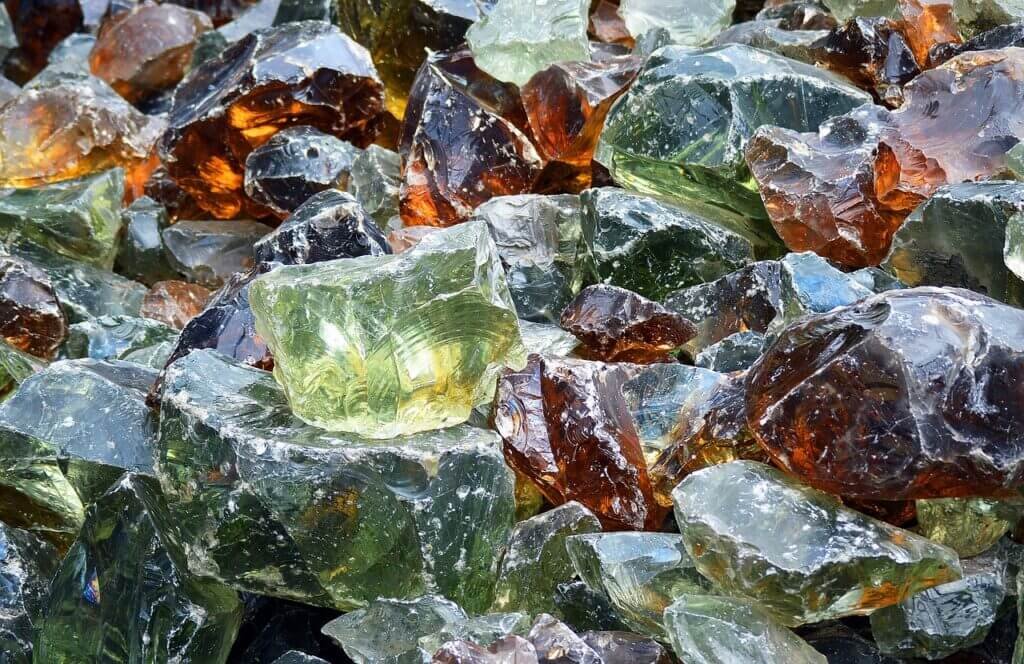
5. Rainwater Harvesting
Rainwater harvesting is a sustainable practice that conserves water by collecting rainwater for future use in your garden. By utilizing recycled materials, you can implement a rainwater harvesting system that reduces your reliance on freshwater sources.
5.1 Constructing a Rain Barrel from Reclaimed Materials
Constructing a rain barrel from reclaimed materials is a simple and effective way to collect rainwater. Find a food-grade barrel, such as an old drum or large plastic container, and ensure it has a tightly fitting lid. Position the barrel under a downspout and attach a mesh screen to the inlet to prevent debris from entering the barrel. With a hose attached to the bottom of the barrel, you can conveniently collect and use rainwater to irrigate your plants during dry periods.
5.2 Installing Recycled Gutter Systems
Rain gutters are essential for channeling rainwater away from buildings, but they can also be repurposed for rainwater harvesting. Install recycled gutter systems along the sides of your roof or along walls that receive a lot of rain runoff. Direct the collected rainwater into rain barrels or storage containers for later use in your garden. By repurposing gutters, you can minimize runoff and make the most of rainwater for your plants.
5.3 Utilizing Recycled Containers for Water Storage
In addition to rain barrels, there are several other recycled containers that can be repurposed for water storage. Large plastic drums, old bathtubs, or even discarded fish tanks can serve as water reservoirs in your garden. Ensure that these containers are properly cleaned and sealed to prevent mosquitos from breeding and contamination. With a system in place to collect rainwater and store it in these containers, you’ll have a sustainable water source for your gardening needs.
6. Mulching
Mulching plays a vital role in maintaining soil moisture, reducing weed growth, and regulating soil temperature. By utilizing recycled materials as mulch, you can further enhance these benefits while minimizing waste.
6.1 Using Shredded Newspaper and Cardboard
Looking for a cost-effective and eco-friendly mulching solution? Shredded newspaper and cardboard can be easily repurposed as organic mulch. Lay a thick layer of shredded newspaper or cardboard around the base of your plants, ensuring there are no gaps. This not only helps retain moisture in the soil but also suppresses weed growth and improves soil structure over time.
6.2 Repurposing Grass Clippings and Leaves
After mowing your lawn or raking leaves, don’t throw away the clippings and leaves. Instead, repurpose them as mulch in your garden. Spread a layer of grass clippings or shredded leaves around your plants, ensuring not to pile them directly against the stems. As these organic materials break down, they release nutrients into the soil, enriching it for healthy plant growth.
6.3 Utilizing Wood Chips from Tree Trimmings
If you’ve recently had tree trimmings or wood chips leftover from a landscaping project, put them to good use as mulch in your garden. Wood chips provide excellent moisture retention, weed suppression, and temperature regulation for your plants. Spread a layer of wood chips around the base of your plants, ensuring not to smother them. As the wood chips decompose over time, they also release organic matter into the soil, further improving its quality.
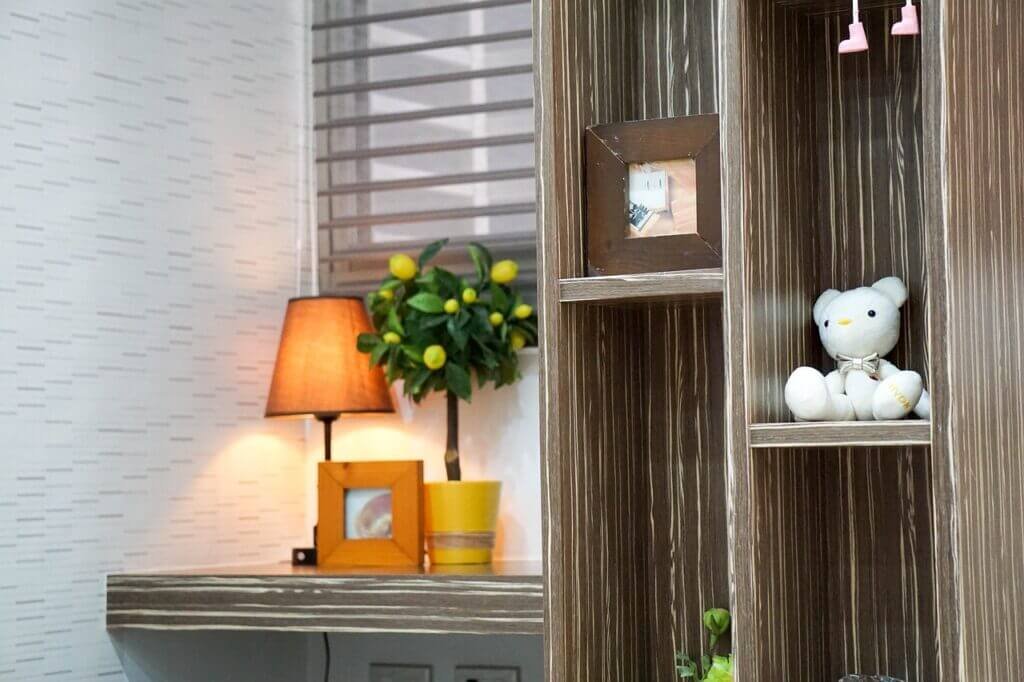
7. DIY Garden Tools
Gardening tools can be expensive, but with a little creativity and resourcefulness, you can repurpose everyday items into practical garden tools.
7.1 Repurposing Old Kitchen Utensils as Gardening Tools
Before discarding old kitchen utensils, consider repurposing them as gardening tools. Metal spoons can be used for transplanting seedlings or loosening soil, while tongs are great for reaching deep into pots. You can even repurpose a whisk into a mini rake for leveling soil or removing debris. By giving these items a second life in the garden, you save money and reduce waste.
7.2 Creating a Watering Can from a Recycled Plastic Container
Don’t have a watering can on hand? No problem! Repurpose a plastic detergent or juice container into a makeshift watering can. Simply drill small holes in the lid or puncture it using a heated metal rod. Fill the container with water, and now you have a cost-effective watering can to keep your plants hydrated.
7.3 Using Recycled PVC Pipes as Plant Stakes
If you have old PVC pipes lying around, repurpose them as plant stakes. Cut the pipes into desired lengths and drive them into the soil alongside tall plants or those that need support. This DIY solution provides stability to your plants and prevents them from bending or breaking under their weight. Additionally, PVC pipes are durable and weather-resistant, making them a perfect choice for long-lasting plant stakes.
8. Garden Art and Decor
Adding art and decor to your garden can enhance its beauty and create an inviting atmosphere. By repurposing materials, you can incorporate unique and eco-friendly elements into your outdoor space.
8.1 Creating Sculptures from Old Metal Objects
Transform old metal objects, such as bicycle parts, discarded tools, or industrial scraps, into eye-catching sculptures for your garden. Let your imagination run wild as you assemble these objects into unique shapes and designs. Spray paint them in vibrant colors for a whimsical touch or leave them in their original rusty state for a more rustic aesthetic. These sculptures not only add visual interest but also showcase your creativity and love for upcycling.
8.2 Using Broken Ceramics for Mosaic Artwork
Instead of throwing away broken ceramics, repurpose them as mosaic artwork in your garden. Gather broken tiles, dishes, or even porcelain figurines, and arrange them on a flat surface, such as a stepping stone or a cement board. Adhere the pieces using waterproof adhesive, and then grout the spaces in between. The result is a stunning mosaic artwork that adds a unique touch to your garden while reducing waste.
8.3 Repurposing Glass Bottles as Garden Borders
If you have a collection of glass bottles, repurpose them as decorative garden borders. Bury the bottles neck-down along the edge of your garden beds, leaving the colored bottoms exposed. This adds a whimsical touch and creates a beautiful border between your plants and pathways. Choose bottles in different colors and sizes to create a visually striking border that reflects your personal style.
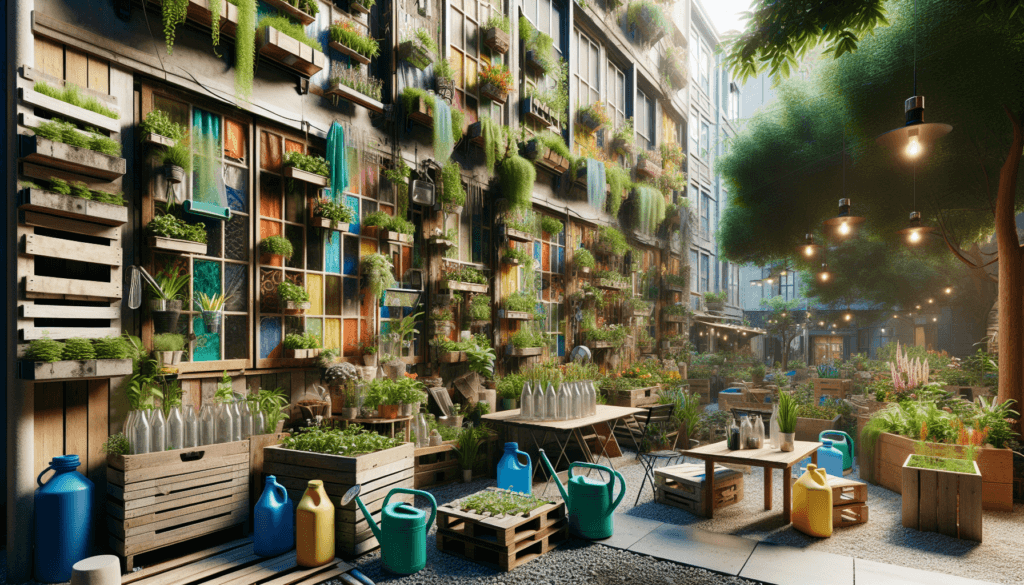
9. Seed Starting
Starting plants from seeds is an economical and rewarding way to grow your garden. By using recycled materials, you can create seedling pots and trays that are environmentally friendly.
9.1 Making Seedling Pots from Recycled Newspaper
Newspaper pots are an excellent alternative to plastic pots for starting seeds. To make newspaper pots, fold a strip of newspaper around a cylindrical object, such as a glass or a small can, to create a tall cup shape. Fold the excess newspaper at the bottom, and remove the cylindrical object. Fill the newspaper pots with seed starting mix, plant your seeds, and place them in a tray for easy transport. The newspaper pots can be directly planted into the soil, as they will decompose over time.
9.2 Using Egg Cartons as Seedling Trays
Repurpose cardboard egg cartons as seedling trays. Fill each compartment with seed starting mix and plant your seeds. The individual compartments provide enough space for each seedling to grow before transplanting them into larger pots or the garden. The cardboard material allows for air circulation and moisture absorption, creating an ideal environment for germination.
9.3 Utilizing Yogurt Cups for Individual Plant Starters
Don’t throw away those empty yogurt cups! Clean and repurpose them as individual plant starters. Punch holes in the bottom of the cups for drainage, fill them with seed starting mix, and sow your seeds. The clear cups allow you to monitor the seedlings’ progress, while the plastic offers durability and protection. Once the seedlings have grown, they can be easily transplanted into larger pots or directly into the garden.
10. Repurposing Household Items
Repurposing household items for gardening not only saves you money but also reduces waste. Look around your home and see what items can be creatively repurposed for your outdoor space.
10.1 Transforming Old Dressers into Vertical Planters
Give a new lease of life to old dressers by transforming them into vertical planters. Remove the drawers and stack the dresser frames on top of each other, leaving spaces for your plants. Fill each compartment with soil and plant flowers, herbs, or even small vegetables. This unique planter not only adds vertical gardening space but also provides additional storage for your gardening tools or supplies.
10.2 Repurposing Old Furniture for Outdoor Seating
Instead of disposing of old furniture, repurpose it for outdoor seating in your garden. Wooden chairs, benches, or stools can be restored or painted to withstand outdoor conditions. Dress them up with weather-resistant cushions or repurposed fabric to create a comfortable and inviting seating area for you and your guests. This sustainable practice not only reduces waste but also adds charm and functionality to your outdoor space.
10.3 Utilizing Old Kitchen Sinks as Outdoor Planters
Old kitchen sinks can find a new purpose as unique outdoor planters. Repaint or refinish the sink to suit your garden’s aesthetic and install it in a sunny spot. Fill the sink with well-draining soil and plant your favorite flowers or herbs. The deep and spacious sink provides ample room for root growth, making it an ideal planter for larger plants. This creative repurposing idea adds a touch of quirkiness to your garden while preventing the sink from ending up in a landfill.
In conclusion, urban gardening offers both a sustainable way to grow your own food and a way to create a green and inviting space in the midst of the city. By utilizing recycled materials, you not only reduce waste but also add a unique and eco-friendly touch to your garden. From vertical gardening to repurposing household items, the possibilities for using recycled materials in your urban garden are endless. So roll up your sleeves, let your creativity flow, and embark on your own urban gardening adventure using recycled materials!
